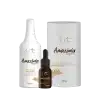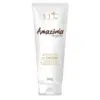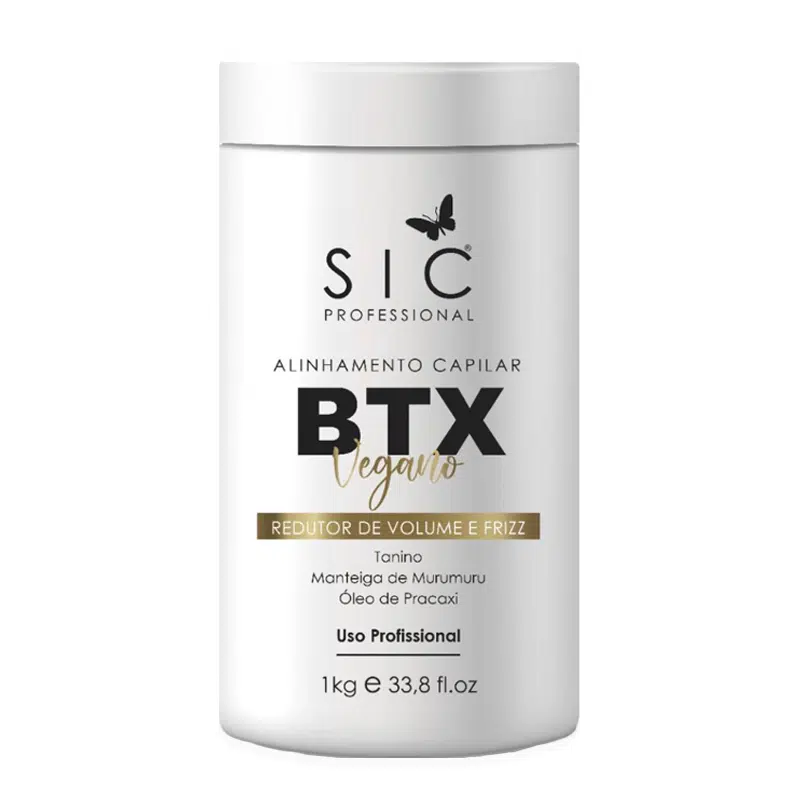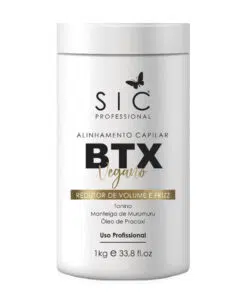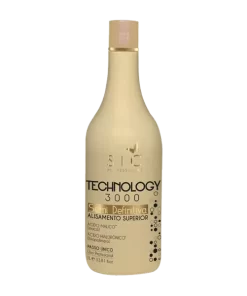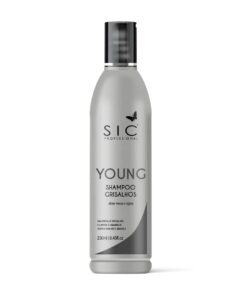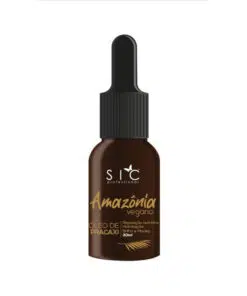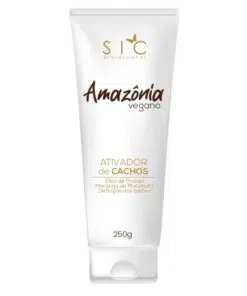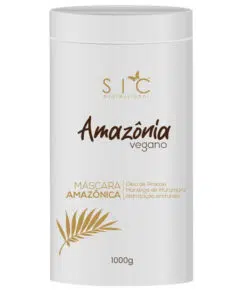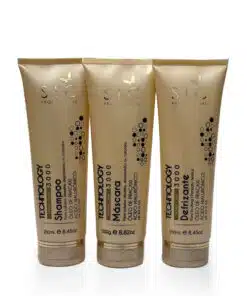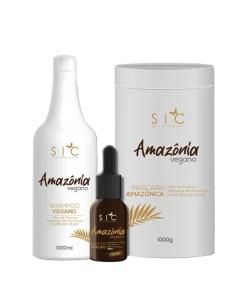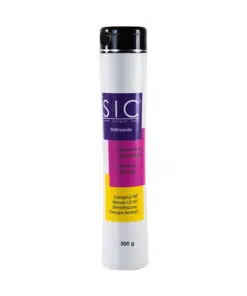SIC Cosméticos Vegan BTX Protocol
The Vegan BTX Hair Alignment is a synergistic treatment that aligns and repairs the hair fiber, nourishing and reconstructing the strands, restoring shine and hydration.
Its composition contains Tannic Acid, which allows the treatment to last longer and rejuvenates the hair, as it helps close the cuticles. It also contains natural active ingredients such as Shea Butter, Murumuru Butter and Pracaxi Oil, which strengthen, nourish and add shine to the hair. Keratin replenishes the hair mass, giving it structure and eliminating the dry appearance.
Main Active Ingredients
Tannic Acid, Shea Butter, Murumuru Butter and Pracaxi Oil
Tannic Acid
Tannins occur in a wide variety of plants and can be found in roots, bark, leaves, fruits, seeds and sap. They are classified into two groups: hydrolyzable and condensed tannins.
Tanase is an extracellular, inducible enzyme produced in the presence of tannic acid by fungi, bacteria and yeasts.
Although there are many potential industrial applications for tannase, few are effectively used, essentially due to the cost of producing the enzyme, which is still high.
The enzyme has wide application in the food, juice, cosmetics, pharmaceutical and chemical industries. It is mainly used for the production of:
- Gallic acid
- Instant teas
- Wine color stabilization
- Coffee-based soft drinks
- Leather treatment process
- Food detanification
- Effluent treatment in the leather industry
Tannins are chemical compounds called polyphenols, formed by hydrogen and oxygen bonds. They are part of the defense system of different plants: due to their bitter and astringent taste, the compound keeps insects away.
In grapes, tannins are present in greater quantities in the skin, leaves and seeds.
The species Cabernet Sauvignon, Tannat, Tempranillo, Nebbiolo and Syrah have the highest concentration of this compound, while the grapes Grenache, Pinot Noir, Zinfandel and Barbera have a low concentration of tannins.
Structure and sources of tannins
The main characteristics of this class of compounds are: solubility in water, except those with high molecular weight; they have the ability to bind to proteins and combine with cellulose and pectin to form insoluble complexes. Tannins are classified into two groups: hydrolyzable tannins and condensed tannins or proanthocyanidins
Hydrolyzable tannins: Hydrolyzable tannins are present in leaves, branches, bark and wood of various trees such as Terminalia, Phyllantus and Caesalpina, among other genera. They are composed of mixtures of simple phenols, such as pyrogallol and ellagic acid, and also esters of gallic or digallic acid with sugars, such as glucose. Hydrolyzable tannins are linked by ester-carboxyl bonds and are readily hydrolyzable under acidic or basic conditions. The basic structural unit of this type of tannin is a polyol, usually D-glucose, with its hydroxyl groups esterified by gallic acid (gallotannins) or hexadihydroxyphenyl acid (ellagitannins).
Condensed tannins
Condensed tannins (CT) or proanthocyanidins are made up of flavanol units: flava-3-ols (catechin) or flavan3,4-diols (leucoanthocyanins). They are present in greater quantities in foods normally consumed. CT can contain two to fifty flavanoid units; they have a complex structure; they are resistant to hydrolysis, but they can be soluble in aqueous organic solvents, depending on their structure. Anthocyanidin pigments are responsible for a wide range of pink, red, violet and blue nuances in flowers, leaves, fruits, juices and wines. They are also responsible for the astringency of fruits, juices and wines, and in many cases they are bioactive compounds in medicinal plants.
Hair Benefits
Powerful antioxidant (molecule capable of inhibiting the action of other molecules) in its natural form and biodegradable. It acts on the hair cortex through molecules, breaking the bonds from the inside to the outside of the hair. It makes it easier to shape it with a flat iron, closing the cuticle and leaving it straight.
Before knowing the benefits provided by Tannic Acid, it is necessary to find out what the substance actually is. Of plant origin, extracted from seaweed and grape skins, Tannic Acid is a powerful antioxidant and anti-inflammatory used in both the beauty and pharmaceutical industries.
Sustainable and biodegradable, the acid is capable of penetrating deeply into other molecules in order to prevent cell oxidation, which is quite common in our daily lives when we come into direct contact with external agents and free radicals. This antioxidant action preserves the proper functioning of tissues and prevents hair loss and weakening.
In addition to its role in treatments, Tannic Acid is also used in hair aesthetic procedures, such as straightening methods, for example.
Precisely because it penetrates deeply into other molecules, the substance is able to act on the hair cortex and break hydrogen bonds from the inside out, enhancing the
smooth and aligned appearance of the hair.
The antioxidant action promoted by Tannic Acid is capable of neutralizing the damage caused by free radicals and providing a much safer straightening process. Its active ingredients promote molecular restructuring in a very natural way, preserving the healthy appearance of the hair strand.
One of the main benefits promised by the acid is linked to sealing the cuticles. The component is capable of regenerating the damage suffered by this layer of the strand and prolonging the straightening effect.
Once sealed, the cuticles are able to hold the straightening properties within their structures, providing an aligned effect for much longer.
In addition to the straightening properties themselves, the hair also gains the power to retain water and nutrients. In this way, treatments aimed at hydration, nutrition and reconstruction are enhanced and the hair strand remains healthy regardless of whether it is undergoing an aesthetic procedure.
Finally, Tannic Acid can also create a protective film around the hair structure, maintaining its integrity and making it much more resistant to damage caused by external agents.
Because it provides healthy, powerful and long-lasting straight hair, Tannic Acid is one of the ingredients used by SIC Cosméticos in the BTX Vegan hair straightening product.
BTX Vegan is an organic, vegan hair straightening product that contains Tannic Acid as its main active ingredient.
In addition to performing molecular restructuring, which will be responsible for the new shape of the hair, the treatment also has the mission of providing repair for damage caused to the hair structure and offering deep hydration to the inner layers of the hair, restoring balance and rejuvenation to the hair.
Application Protocol.
- Wash your hair with shampoo
- Dry 70% to 100% with a blow dryer
- Divide your hair into 4 equal parts, apply the BTX Vegan SIC Hair Alignment strand by strand, always respecting 1 centimeter from the root
- Leave it to rest for 40 to 60 minutes.
- After the rest, realign the strands with the help of a fine-tooth comb.
- Rinse with plenty of water.
- Dry, brush and straighten thin strands 5 to 10 times per strand.



